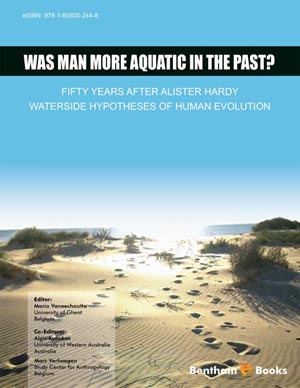Abstract
The aquatic ape hypothesis (AAH) offers the possibility to re-interpret several aspects of the human pre- and perinatal periods. We introduced the concept of birthing pools in the 1970s in order to treat labor pain, particularly lumbar pain in the middle of cervical dilation associated with failure to progress. We assumed that immersion in water at body temperature would be a way to reduce the level of stress hormones, facilitating the release of oxytocin. We first learned that the dilation of the cervix could progress dramatically in an aquatic environment before water immersion, and that it was associated with behavior suggestive of a reduction in neocortical control. The release of inhibitors of neocortical control in an aquatic environment was an opportunity to phrase new questions about the relationship of Homo sapiens with water. We also learned that occasionally some women did not want nor had the time to get out of the pool for the birth itself. They behaved in a way suggesting that, while in a particular state of consciousness, they knew that a birth under water was safe for the baby. The origin of this knowledge, and the strong attraction towards water that some women experience during labor, should be looked at in the light of the AAH.
By raising questions about the development of the human brain from an evolutionary perspective, the AAH enables to pose similar questions from an ontogenetic perspective. Today the focus is on the needs in iodine, docosahexaenoic acid, vitamin D, and other nutrients that are essential for brain development, and that happen to be abundant in seafood. This led us to reconsider (pre-)eclampsia as a multi-factorial syndrome, related to a maternalfetal conflict, whereby inadequate maternal nutrition is prioritized as a factor that can independently increase the probability of conflict, challenging the current belief that reduced utero-placental perfusion is the unique pathophysiological process in this human pregnancy disease. In other words, we present (pre-)eclampsia as the price some humans have to pay for having a large brain, while the specific nutritional needs are not ideally satisfied.
Other puzzling and unexplained human particularities in the perinatal period, such as human neonatal vernix caseosa and of the absence of human maternal placentophagy, can be re-interpreted in the light of the AAH.
Keywords: Birthing pool, eclampsia, pre-eclampsia, nutrition in pregnancy, developing brain, maternal-fetal conflict, vernix caseosa, placentophagy













